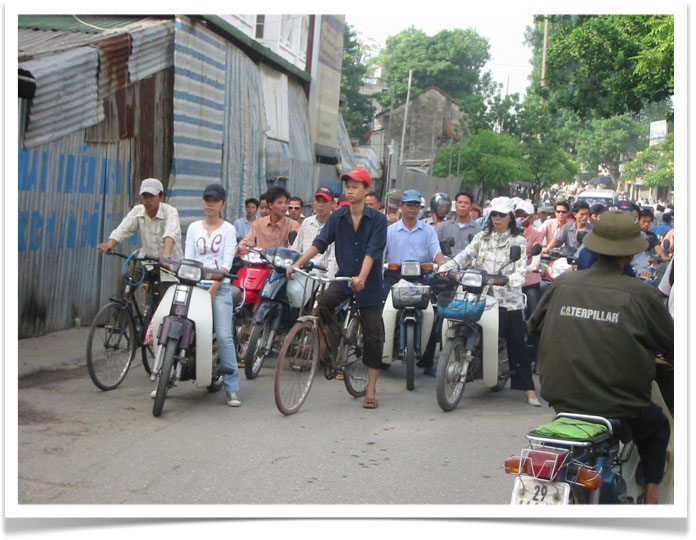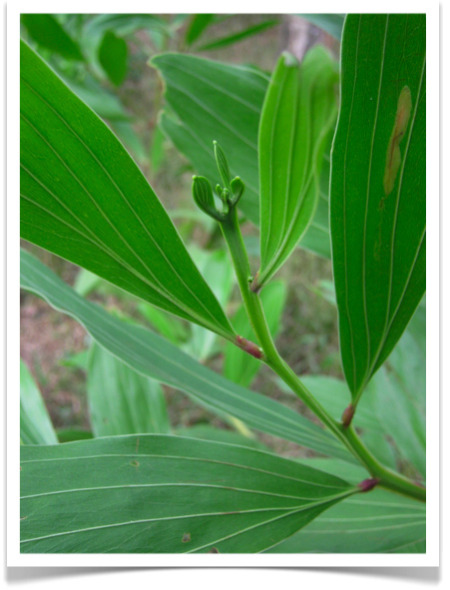Bodhisattvas at Chua Tay Phuong (from the Archive)
 Tuesday, May 18, 2010 at 10:10AM
Tuesday, May 18, 2010 at 10:10AM 




If you see books or music or tools on this site that you would like to buy through Amazon, click here and thus i have seen will get a small percentage of the purchase price of the item. Thank you.
The Elements of Typographic Style
Patagonia Synchilla Snap-T Pullover
Minding the Earth, Mending the Word: Zen and the Art of Planetary Crisis
North Face Base Camp Duffel (Medium)
 Tuesday, May 18, 2010 at 10:10AM
Tuesday, May 18, 2010 at 10:10AM 




 Thursday, April 29, 2010 at 12:13PM
Thursday, April 29, 2010 at 12:13PM On the road to the Song Thanh Nature Reserve in Quang Nam province, Vietnam (see Song Thanh N.R. and Rattan Workshop), there is a cool suspension bridge at the entrance to Ta Bhing commune. Although the video clip is really about the bridge, it's hard to ignore the denuded slopes in the background and the color of the water in the river.
 Song Thanh Nature Reserve,
Song Thanh Nature Reserve,  Ta Bhing,
Ta Bhing,  Vietnam in
Vietnam in  Other |
Other |  Share Article |
Share Article |  Email Article |
Email Article |  Print Article
Print Article  Friday, April 9, 2010 at 9:41AM
Friday, April 9, 2010 at 9:41AM 
This is what morning rush hour traffic looks like in Hanoi. A veritable river of bicycles and motorcycles. Packed together, the handlebars only inches apart, but miraculously never touching. It's like there is a thin forcefield around each vehicle that repels foreign objects. See Going to Dinner in Hanoi for a view of nighttime traffic from the back of a motorcycle.
 Friday, October 16, 2009 at 10:09AM
Friday, October 16, 2009 at 10:09AM 
The entrance to Thanh Hoa cave at Thay Pagoda in Vietnam (see Thay Pagoda) is guarded by a scary stone dragon. The founder of Thay Pagoda, Tu Dao Hanh, meditated for long periods in this cave and he is reported to have died here as well. Just so you know. [NOTE: The green eyes are a nice touch...].
 Thursday, September 10, 2009 at 1:56PM
Thursday, September 10, 2009 at 1:56PM 
Of all the wonderful things to experience at Thay Pagoda (see Thay Pagoda), the most sublime of all may be the view from the summit looking back to Hanoi. The karst formations appear magically from the surrounding ricefields. [NOTE: Thay Pagoda, also known as Thien Phuc (Heavenly Blessing), is dedicated to the historical Buddha, Siddhartha Gautama].
 Wednesday, September 9, 2009 at 9:12AM
Wednesday, September 9, 2009 at 9:12AM 
The main entrance to the first hall at Tay Phuong pagoda (see Main Hall at Tay Phuong and Bodhisattvas at Chua Tay Phuong) contains this imposing fellow. A calm countenance, but with the sword, armor, and painted lips, clearly not someone you want to mess with. [NOTE: I was told that the beautiful bell to the right dates from the 8th century].
 Tuesday, September 8, 2009 at 1:38PM
Tuesday, September 8, 2009 at 1:38PM It seems I always take photos of street vendors during my trips to Vietnam. The beautiful colors. The grace of balancing two loaded baskets on a shoulder pole. The smiles. The cacophony of sounds. The traffic (see Scenes from the Old Quarter). Here are a few of my favorites:




 Wednesday, August 26, 2009 at 10:58AM
Wednesday, August 26, 2009 at 10:58AM 
Heading north on Highway 1A, we got trapped in a huge traffic jam. About 40 km outside of Hanoi, the traffic slowed down to a crawl - and then stopped completely. Several drivers noticed that the three lanes on the other side of the highway, i.e. the southbound lanes, were open and started crossing over the divider to get around the congestion. Our driver did the same. A stampede ensued. This strategy, of course, only works until you encounter the traffic coming from the other direction. Which happened quite quickly (see above). Six lanes of traffic heading south encounter six lanes of traffic heading north. With no way to back up. Things started to pile up pretty fast.
Our driver saw this happening and drove through a field to get off the highway. We took the back roads through a bunch of small villages (the scenic route) to get to Hanoi. We heard on the radio as we were arriving that the traffic on Highway 1A was still backed up 20 kilometers in each direction. [NOTE: Before bailing out of this mess, I noticed that one of the gridlocked cars was decorated with flowers and streamers and that there was a young woman in a wedding dress sitting in the back seat. Sigh].
 Tuesday, August 25, 2009 at 9:49AM
Tuesday, August 25, 2009 at 9:49AM 
The forests of Vietnam are a curious mix of the sublime and the simple. In spite of the deforestation rate and the chronic loss of primary forest each year (see Forests of Vietnam), the total area of forest cover in Vietnam has reportedly increased over the past two decades (but go here for a different assessment). This is largely due to reforestation activities and the creation of single-species plantations. The species most commonly planted in these plantations is Acacia mangium (shown above). You will drive by thousands of hectares of Acacia mangium as you travel through Vietnam.
This species propagates well, grows fast, protects the soil, and fixes nitrogen. There are a lot of reasons for planting it. Still, from an ecological standpoint, replacing some of the most biodiversity-rich forests in Southeast Asia with a single species of tree from northeastern Australia has its problems.
 Sunday, August 23, 2009 at 5:53PM
Sunday, August 23, 2009 at 5:53PM Vietnam has the second highest rate of deforestation of any country in the world. Over the past 50 years, the area of primary forest in this country has declined from 45% to less than 15%. This is what the outside and inside of the last 15% looks like. It was a privilege to spend the last two weeks working in these forests. May they be conserved and used wisely. [NOTE: Nigeria, apparently, has the world's highest rate of deforestation].


The beautiful understory plants are Licuala palms (see Harvesting Licuala). Both images are from Song Thanh Nature Reserve.